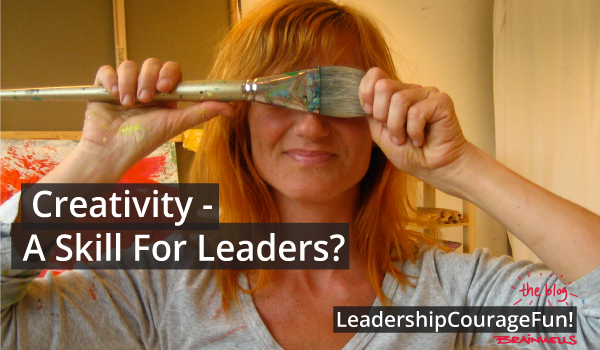Det er mange myter om kreativitet, og mange av dem passer dårlig med det vi forbinder med ledelse. Men det er synd – for ambisiøse ledere som er opptatte av suksess må både trene på og mestre å være kreativ, skriver Kristine Maudal og Even Fossen i Brainwells.
(Artikkelen er republisert fra Brainwells blogg)
There are many myths about creativity. One of them is that creativity is a skill reserved for the few: The artists. The creators. The crazy ones.
But this notion is wrong. Creativity is present at all times, available to everyone. And we need to work on being creative to master new challenges and to grow, as human beings and in an organizational context.
For ambitious leaders who are concerned with improving their team and releasing their companies’ potential, creativity is essential. If you are a leader or a change maker – your goal should be to practice and master creativity as an infinite resource to tap into.
There are many situations that tend to bring out our own creativity. For example, when you are facing limited resources. Or, when you have a lack of time for instance. Why? Because the need for coming up with a solution is more important than the fear of failing. When this happens, you focus. You find a solution. And you move on.
Often, you do not even recognize that your creative capacity has been at work.
Tren deg kreativ
When Kristine graduated from the university years ago with a major in Business and a minor in Fine Art – she did not know what to do. She had to choose between developing a career as an artist or entering corporate life. It was really hard to decide. “I really loved art, but I did not trust my creative powers. I was afraid it was a source that would be emptied over time. And if that happened, what should I do next?” she wondered.
Today, working as a professional artist AND a business partner in Brainwells, she knows better. The ability to be creative does not vanish over time. On the contrary, creativity can be looked upon as a muscle. In order to grow your creative muscles and make them strong and flexible, you need to use them. Over and over again. In a variety of situations.
The practice involves risk taking, that’s for sure. But over time you also develop a sense of what will work or what does not. Some call this a gut feeling. Some call it instinct. We think it is about practice and the courage to do something new. In Kristine’s artistic endeavors she faces it every time she creates new artwork. In order to find something new, she must be willing to risk it all.
“Today my creative skills are just as present in business life as in my art. Not only present, but also needed. This, I have to admit, took me by surprise. I did not expect business, structure, and methodology development to be this fun. I just love using the systematic and logical part of the brain, combine it with the creative side, be innovative and embrace change.”
Creativity is present in all human beings. The problem is that we often suppress or unlearn the skill of being creative on our way to being an adult and professional. In order to meet requirements imposed upon us from the outer world or ourselves.
Creativity is a skill that can be learned. It is about training your brain to look around corners, to expect the unexpected, and to be prepared. One way of doing this, is to stop avoiding creative challenges, and rather embrace these challenges with curiosity. And it is also good to know how to train your creative skills. Either alone, or as a team.
En øvelse for deg
Try this simple training exercise:
As a leader or part of a team you can quite easily try the effective method of “Changing Roles” in order to jog your creative muscles:
This is how you do it: When going about solving a problem or task, it is easy to rely solely on your own experience. This might generate effective solutions but probably not innovative ones since they are based on what you already know. Instead – change roles in order to get a variation on your views. If you work together with others, try being each other. If you work alone, try to think about how “Mr. Smith” would have solved this. Looking at things from a different perspective will ensure that the creative part of your brain starts working. It might be difficult at first, but – hey – this is training. You need to do it a few times to master it well.
(Artikkelen er republisert fra Brainwells blogg)









